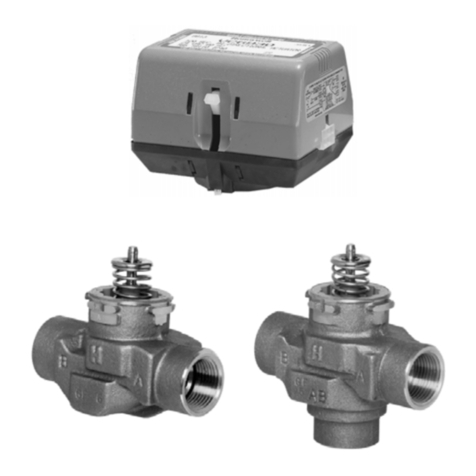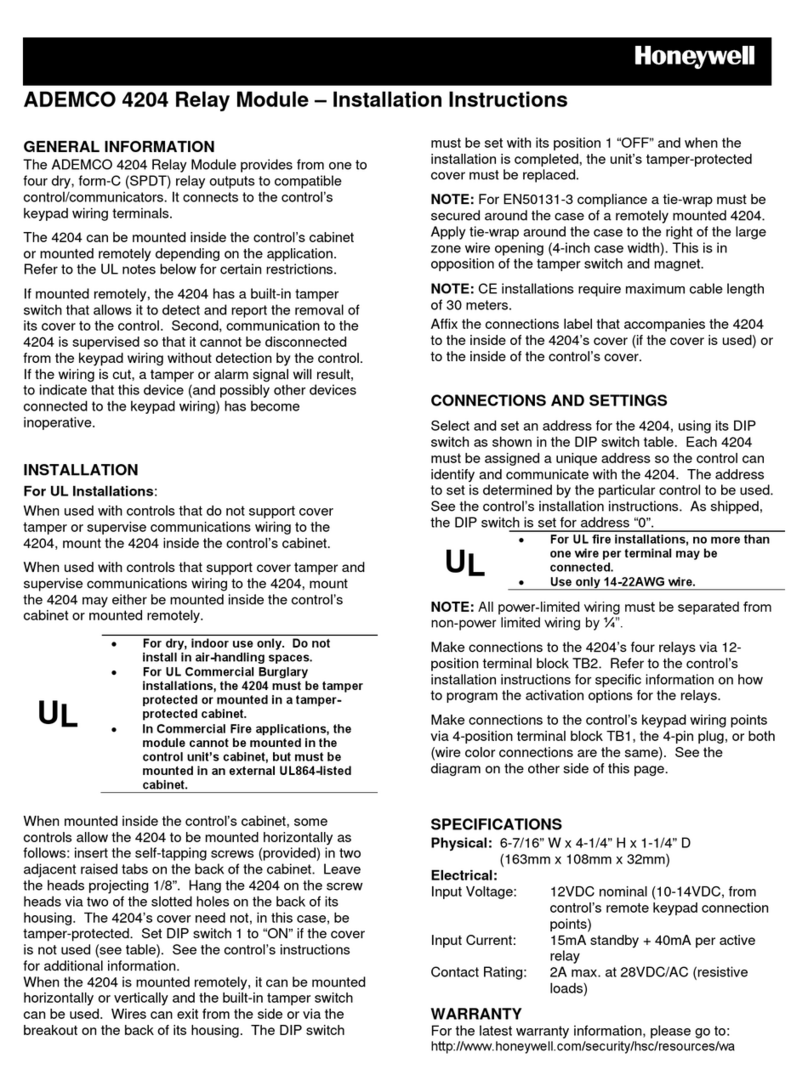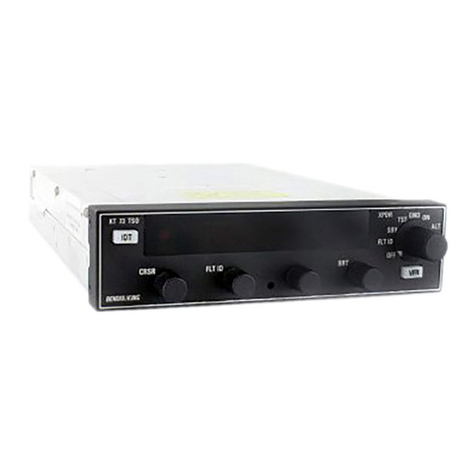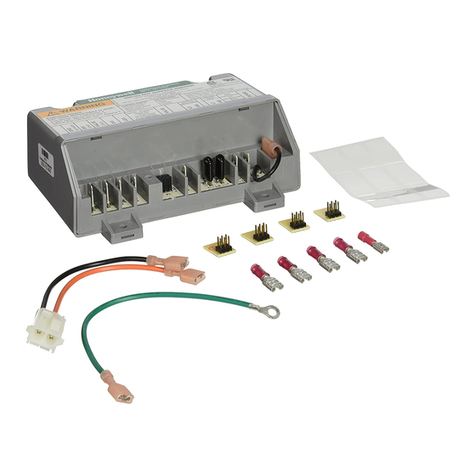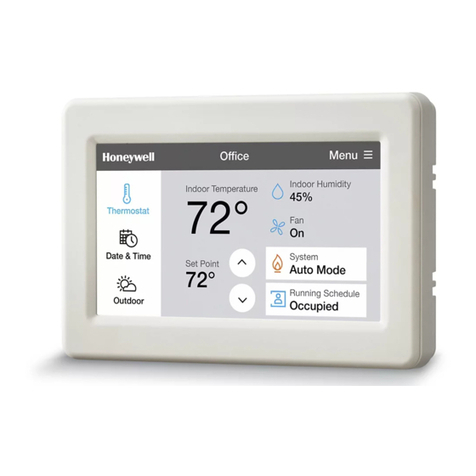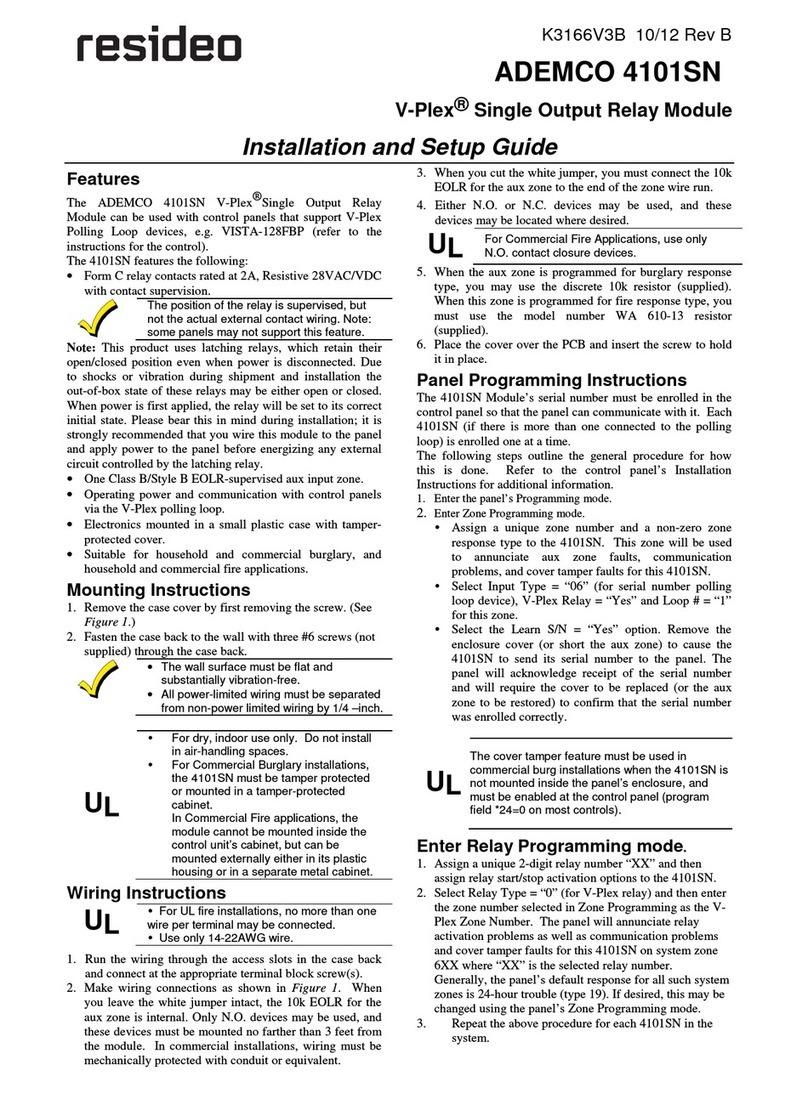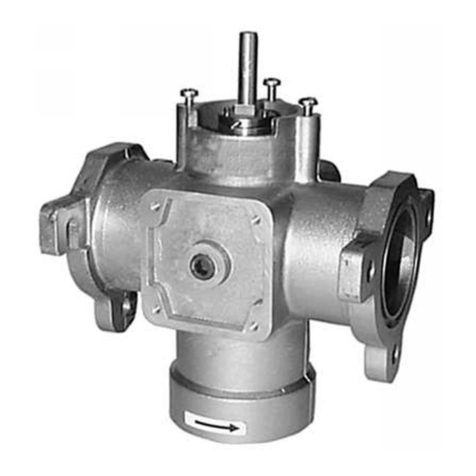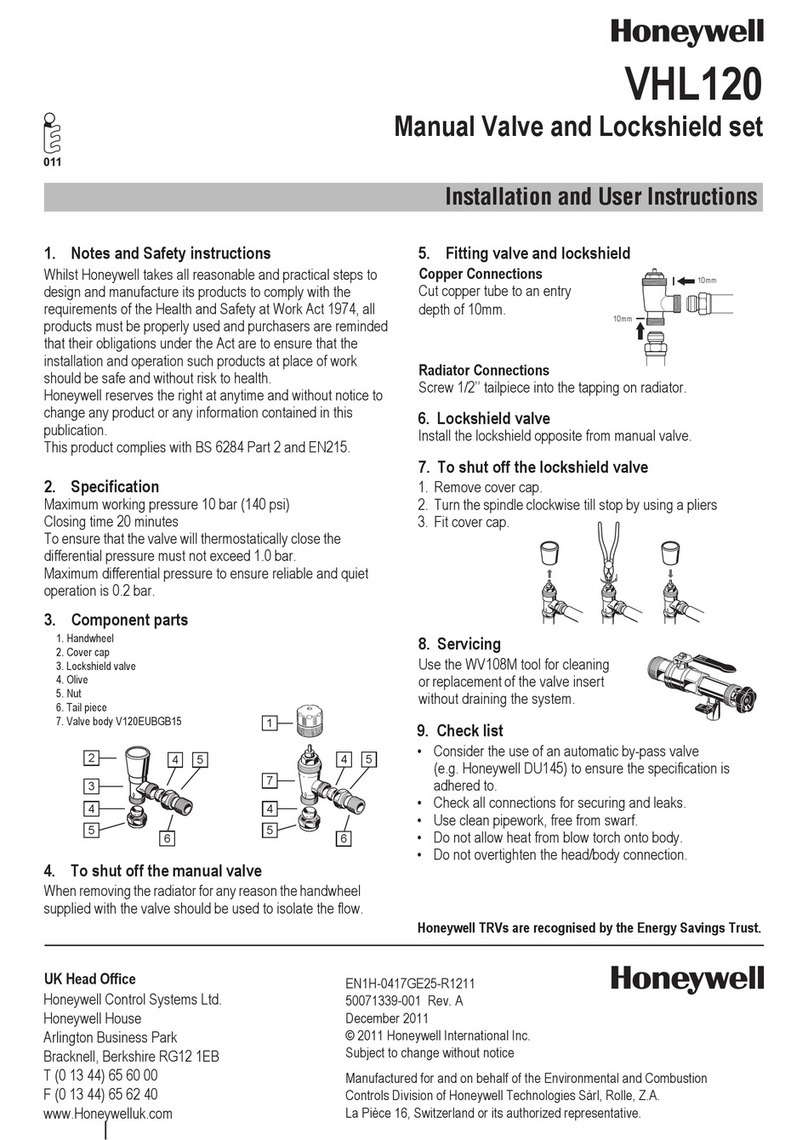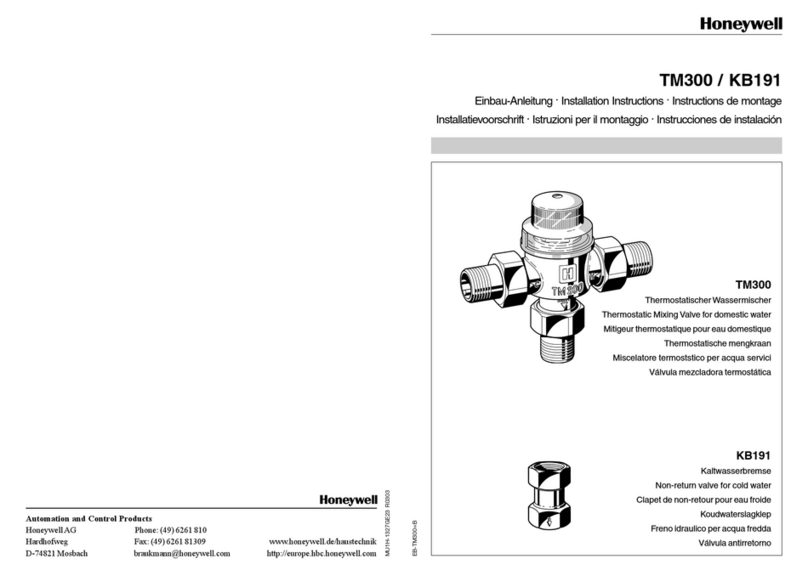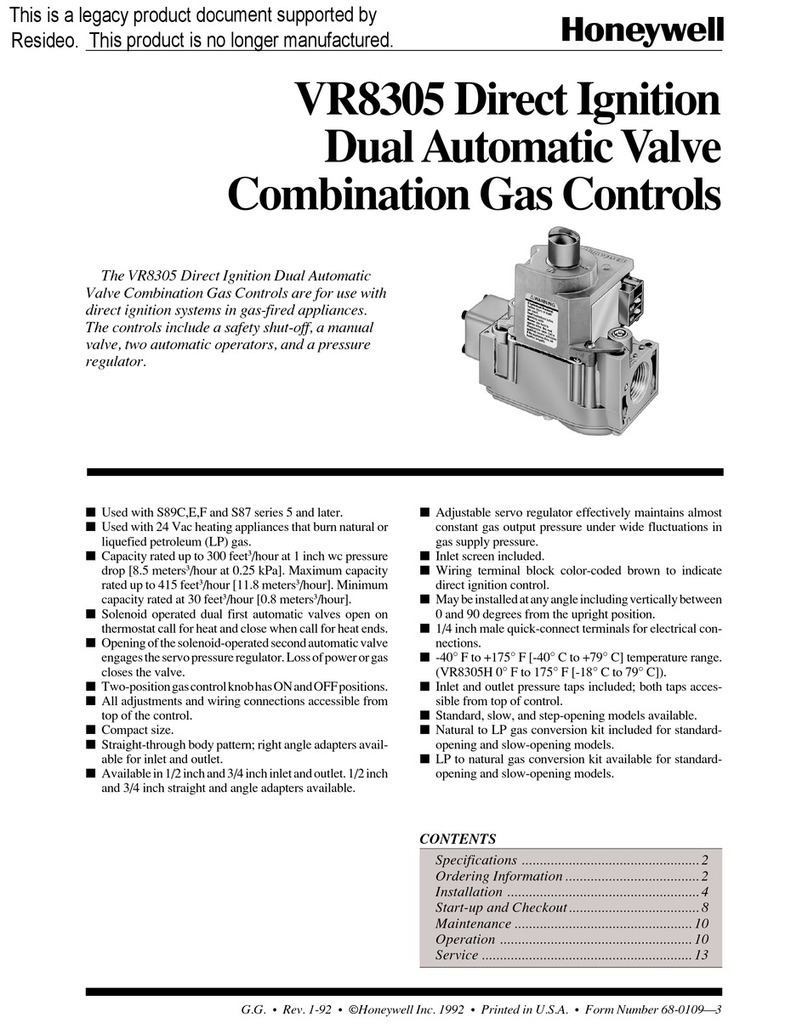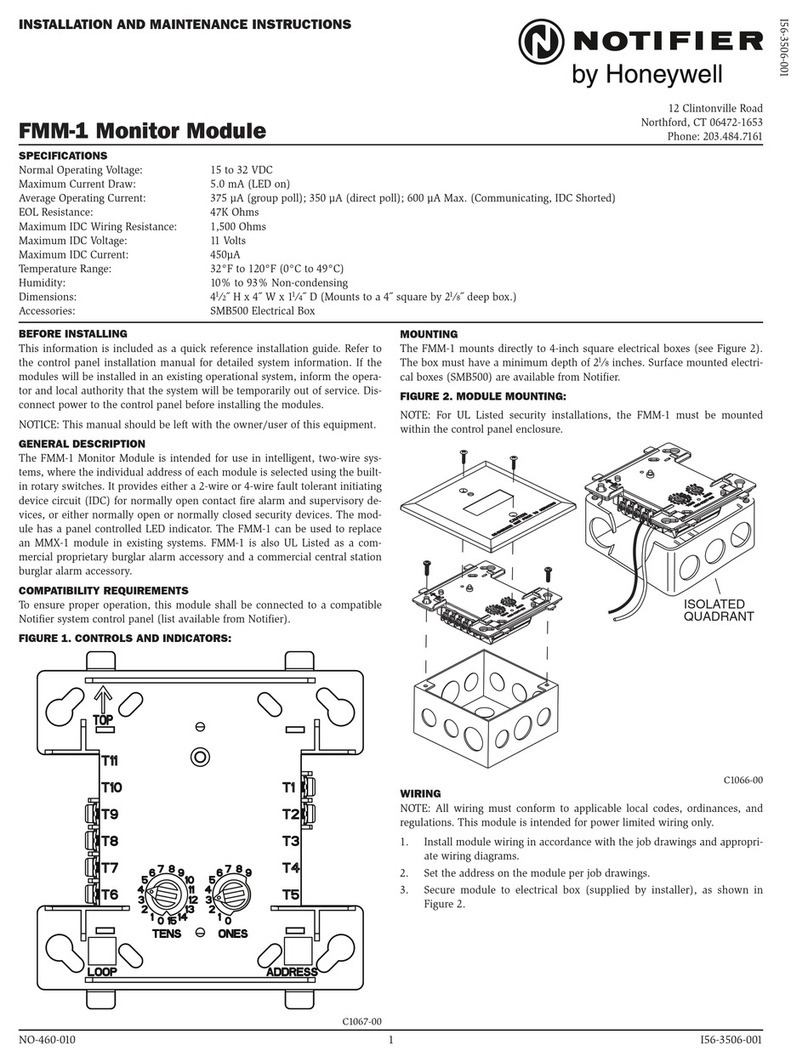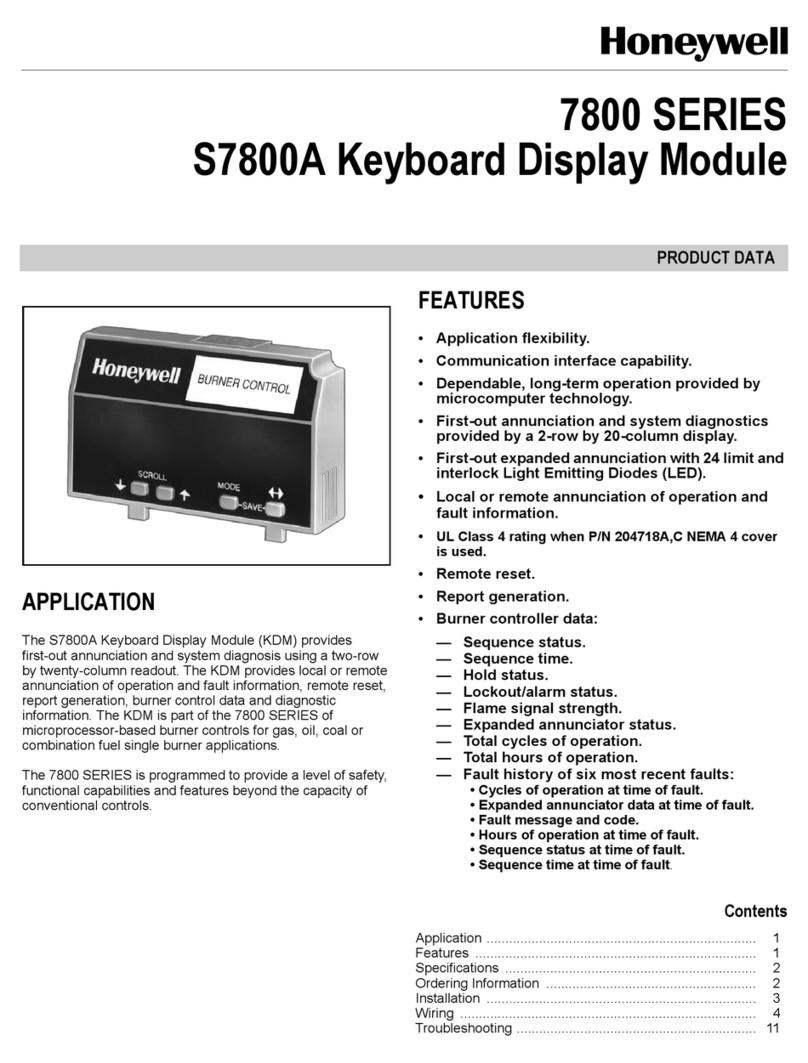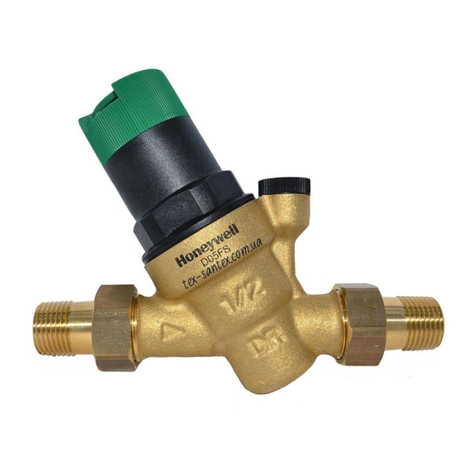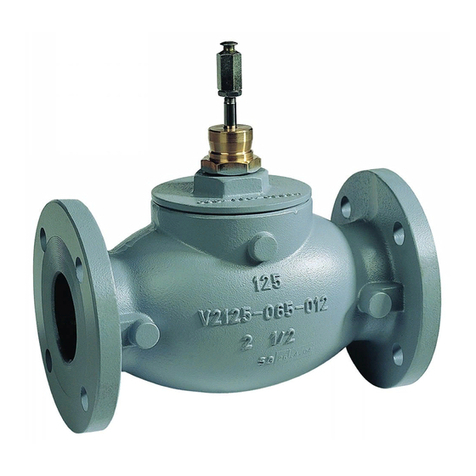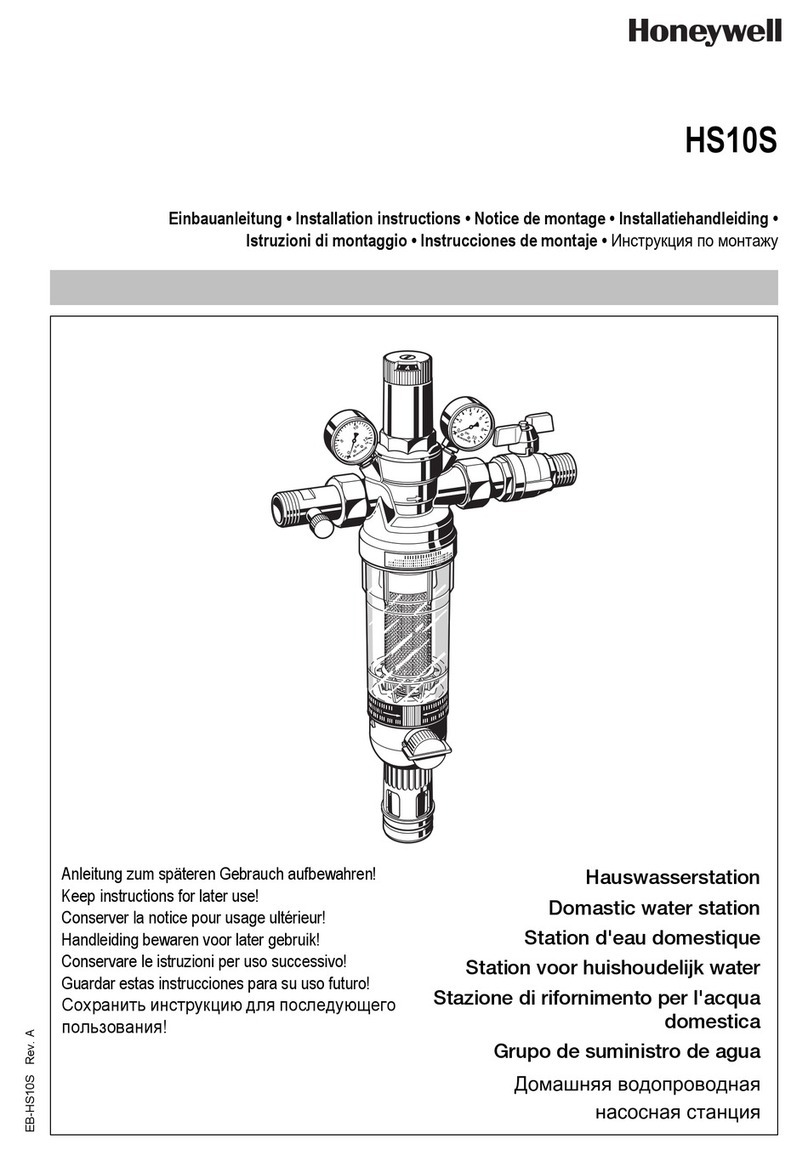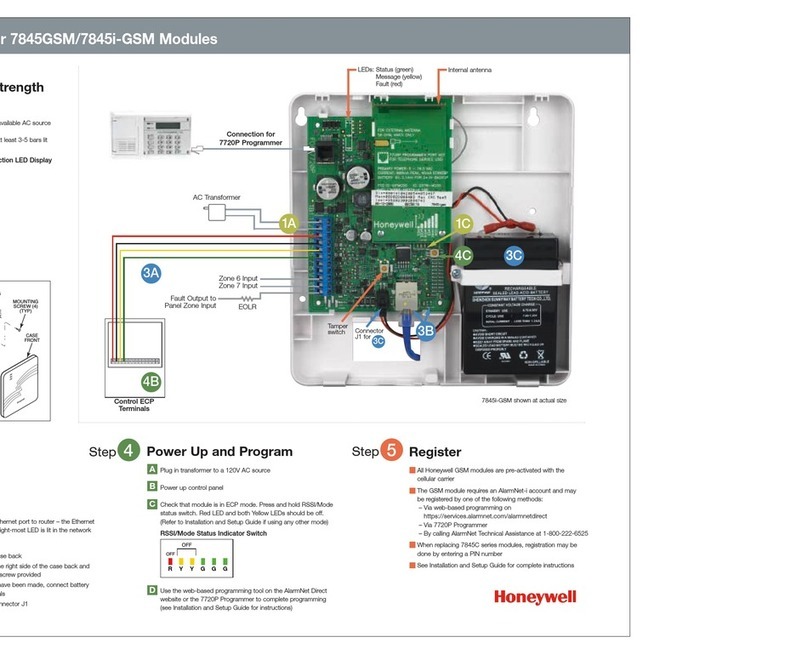
65-0126—2 8
Principal Technical Features
RM7890A,B,C
PRINCIPAL TECHNICAL FEATURES • SAFETY PROVISIONS
INTERNAL HARDWARE STATUS MONITORING
The RM7890 analyzes the integrity of the configuration
jumpersandinternalhardware.ThePOWERLEDwillblink
every four seconds, signifying an internal hardware check.
CLOSED LOOP LOGIC TEST
The test verifies the integrity of all safety critical loads,
terminals8, 9 and 10.Iftheloadsare not energizedproperly;
i.e., the main valve terminal is powered during STANDBY,
the RM7890 will lockout on safety shutdown. The RM7890
must react to input changes but avoid the occurrence of
nuisance shutdown events. Signal conditioning is applied to
line voltage inputs to verify proper operation in the presence
of normal electrical line noise such as transient high voltage
spikesorshortperiodsoflinedropout.Signalconditioningis
tolerantofsynchronous noise (line noiseeventsthat occur at
the same time during each line cycle).
DYNAMIC AMPLI-CHECK™
Dynamic AMPLI-CHECK™ circuitry tests the flame
signal amplifier during burner operation and shuts down the
RM7890 if the flame amplifier fails.
DYNAMIC FLAME AMPLIFIER AND SHUTTER
CHECK
Self-checking circuitry tests all electronic components in
theflamedetectionsystemandamplifier12timesperminute
and shuts down the RM7890 if the detection system fails.
DYNAMIC INPUT CHECK
All system input circuits are examined to assure that the
RM7890is capable of recognizingthe true status ofexternal
controls, limits and interlocks. If any input fails this test, a
safety shutdown occurs and the fault will be annunciated.
DYNAMIC SAFETY RELAY TEST
Checks the ability of the dynamic safety relay contact to
open and close. Verifies that the safety critical loads, termi-
nals 8, 9 and 10, can be de-energized, as required, by the
Dynamic Self-Check logic.
DYNAMIC SELF-CHECK SAFETY CIRCUIT
The microcomputer tests itself and related hardware, and
atthesametime, the safety relay system tests themicrocom-
puter operation. If a microcomputer or safety relay failure
occursand does notallowproperexecution of theself-check
routine, safety shutdown occurs and all safety critical loads
will be de-energized.
EXPANDED SAFE-START CHECK
(EXCEPT RM7890C)
Theconventionalsafe-startcheck,whichpreventsburner
start-upifflameisindicatedatstart-up,isexpandedtoinclude
a flame signal check during STANDBY and a safety critical
load check.
OFF CYCLE (STANDBY) FLAME SIGNAL CHECK
(EXCEPT RM7890C)
Theflamedetectionsubsystem(flamedetectorandampli-
fier) is monitored during STANDBY. If a flame simulating
condition or an actual flame exists for 40 seconds in
STANDBY, a system hold occurs and start-up is prevented.
If the flame signal exists at any time after the 40 seconds
during STANDBY, a safety shutdown occurs and is annun-
ciated. A shutter-check amplifier and self-checking detector
areenergizedforthe first40seconds duringSTANDBYand
the last two seconds before exiting STANDBY. If a flame
exists after the first 40 seconds of STANDBY, the shutter-
check amplifier and self-checking detector are energized
The RM7890 provides all customary flame safeguard
functions while providing significant advancements in the
areas of safety, annunciation and system diagnostics.
SAFETY SHUTDOWN (LOCKOUT) OCCURS IF:
1. INITIATE PERIOD
a. AC line power errors occurred, see Operation.
b. Configuration jumpers have been changed (after
200 hours).
c. Four minute INITIATE period has been exceeded.
2. STANDBY PERIOD
a. Flame signal is present after 40 seconds.
b. Ignition/intermittent pilot valve terminal is ener
gized.
c. Internal system fault occurred.
d. Main valve terminal is energized.
e. Three second Flame Failure Response Time
(FFRT) Amplifier is installed and configuration
jumper is selected for relight (see Table 3).
3. SAFE START CHECK (EXCEPT RM7890C)
a. Ignition/intermittent pilot valve terminal is ener-
gized.
b. Internal system fault occurred.
c. Main valve terminal is energized.
4. PILOT FLAME ESTABLISHING PERIOD (PFEP)
a. Ignition/intermittent pilot valve terminal is not en-
ergized.
b. Internal system fault occurred.
c. Main valve terminal is energized.
d. No flame present at end of PFEP.
5. RUN PERIOD
a. Ignition terminal is energized.
b. Internal system fault occurred.
c. Main valve terminal is not energized.
d. No flame present and configuration jumper is se-
lected for lockout.
e. Pilot valve terminal is not energized.
Safety Provisions
